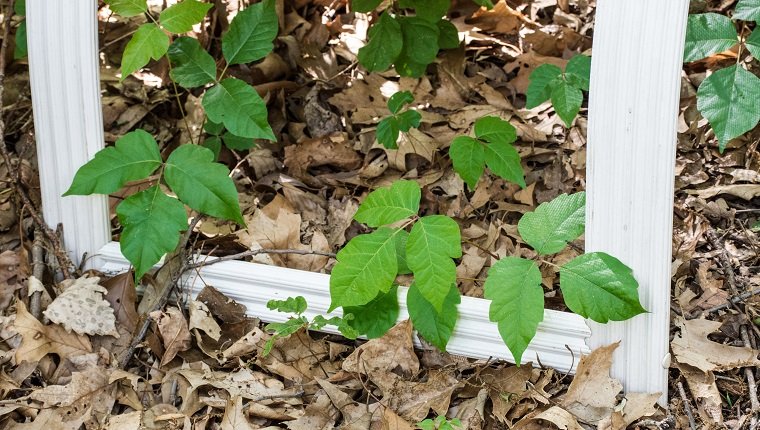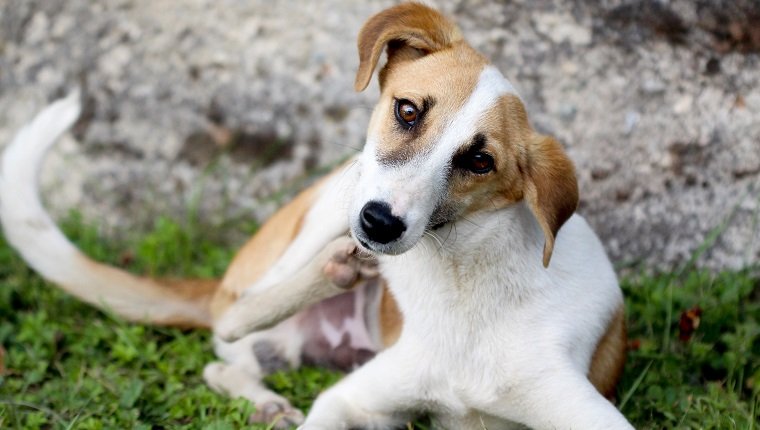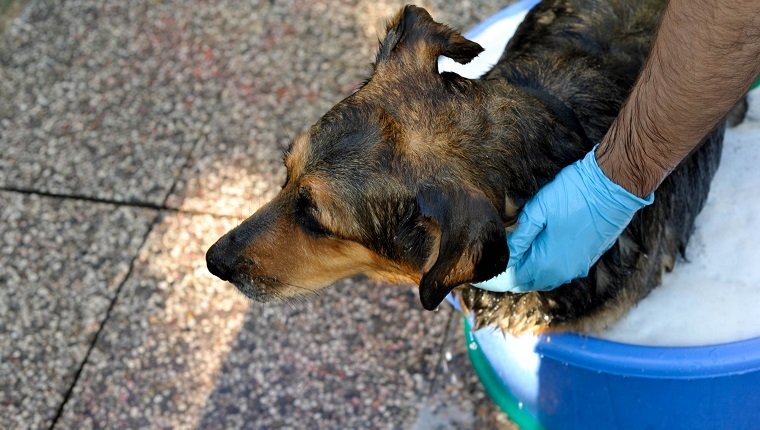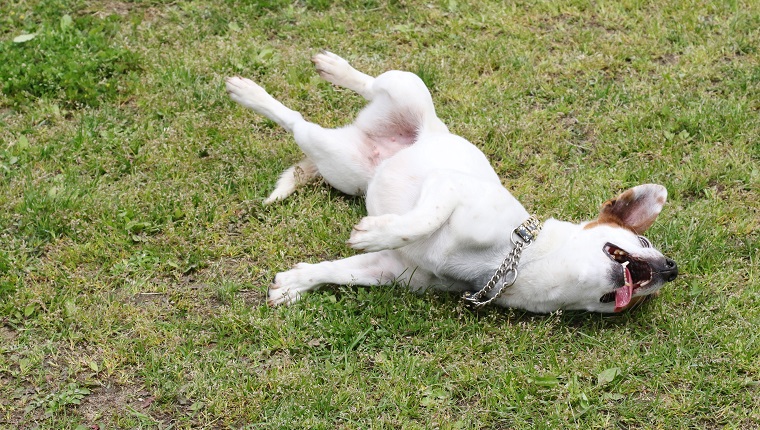Poison ivy may be a concern for dog parents out for a walk in areas where there are a lot of plants. You probably have a few questions. What does poison ivy look like? How do you treat poisoning if your dog touches the plant? What symptoms should you look out for?
The good news is that poison ivy doesn’t affect dogs as often as humans. Their fur coats reduce the chances that their skin will be exposed.
Still, there is a chance that a red, itchy rash will appear, and dogs who eat the plant may suffer some gastrointestinal upset. Treatment for poison ivy poisoning in dogs is usually similar to the way humans are treated, and mild cases can go away on their own.
If you see signs that your dog’s skin is reacting to contact with a plant, you must consult your veterinarian for proper treatment. Here’s what you should know about poison ivy and dogs.
What Does Poison Ivy Look Like?

Being able to identify poison ivy by what it looks like can help you to avoid the risk of poisoning altogether.
The plant is native to North America and can be found in forests, fields, wetlands, backyards, and pretty much anywhere a dog might go. It grows in clusters of shrubs or vines, and you can spot them by their groups of three jagged, green leaves.
The part of the plant that causes trouble is its sap, which has uroshial oil and is found everywhere in the plant.
A good way to remember what poison ivy looks like is the rhyme, “Leaves of three, let them be.”
What Are The Symptoms?

Symptoms of poison ivy poisoning in dogs arise from contact with the uroshial oil. You must be careful, as this oil can transfer from dog to human or any surface that the dog comes into contact with.
The oil stays potent for a long time, so be careful not to let yourself, other dogs, or other family members come into contact with it.
The symptoms will often depend on whether your dog has ingested the plant or simply made skin contact with it.
Here are some signs that your dog might be suffering from poison ivy poisoning:
- Red skin
- Itching and inflammation
- Raised bumps
- Blisters or scabs that ooze fluid
- Scratching, licking, or chewing the skin
- Vomiting
- Diarrhea
It’s important to note that almost any substance, including poison ivy, can cause a severe allergic reaction called anaphylaxis. This condition can be life-threatening. If you see signs of severe allergic reaction, get to an emergency vet right away.
Generally poison ivy reactions don’t occur in dogs very often, though some dogs are at higher risk for poisoning. These include the American Hairless, the Chinese Crested, the Hairless Khala, the Peruvian Inca Orchid, and the Xoloitzcuintli because they have less hair than most other breeds.
Areas of your dog’s body that have thin fur are at higher risk.
Treatment For Poison Ivy On Dogs’ Skin

When you treat your dog for poison ivy poisoning, you must wear gloves or the oil may transfer to your skin and cause you to suffer similar irritation. You must also consult your vet for your individual pet’s care.
Treatment for skin conditions related to poison ivy usually begins with a warm bath with mild shampoo. It’s a good idea to rinse and repeat to be thorough.
You should wash any towels you use to dry your dog. It’ll be hard to tell if the oil has been completely removed, so it may be best to keep your dog off of furniture that’s used by people or other pets until the skin condition clears.
You may wish to discuss giving your dog Benadryl with your veterinarian. This is safe so long as you stick to your vet’s guidelines. It may help alleviate some of the symptoms.
Mild cases of poison ivy poisoning may disappear on their own.
Home remedies include plantain leaf, aloe vera, cucumber slices, or calamine lotion, though you should consult your vet before trying these. Rubbing alcohol can help clean the area and cool it down, although you should never apply this to the face or genitals. Again, consult your vet.
A cold compress and a fan will also help keep the affected area cool and soothe the itch and pain.
Treatment For Poison Ivy When Ingested

If your dog ate the plant, it’s best to take a trip to the vet, especially if there are symptoms of fever and loss of appetite.
Your vet may treat for possible infections with antibiotic or antifungal medication if they suspect some other cause for the symptoms. With gastrointestinal upset, make sure your dog gets plenty of fluids and that they stick to bland foods.
In extreme cases, intravenous fluids may be needed to prevent dehydration from sever vomiting or diarrhea.
In general, poison ivy poisoning shouldn’t be too much cause for concern for most dog parents. Just be cautious, avoid the plant whenever you see it, and keep an eye out for symptoms. Your pup should be just fine.
Has your dog ever had poison ivy poisoning? How did you treat it? Let us know in the comments below!





